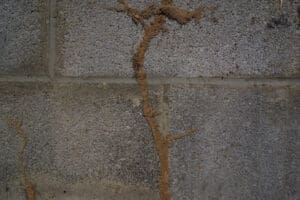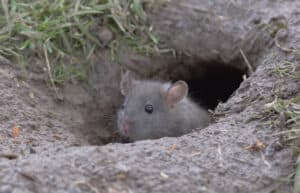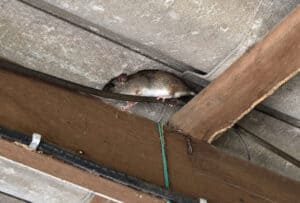It’s useful to understanding how rat baits work, as it illustrates the challenges of carrying out a DIY rodent treatment and why is it normally a better option to get a professional rodent treatment.
What’s in a rat bait?
Rat baits include a variety of grain-based foods and a rodenticide. There are a number of different types of rodenticides. The most common type of rodenticide are anti-coagulants. When the rodents eat these baits, over a period of time the anti-coagulant leads to internal bleeding and the rodents fall asleep and die.
Types of rat bait
There are different types of rat bait. The different formulations have different combinations of food materials and so they can vary in palatability. Of more importance is that there are three main formats of rodent bait – pellets, blocks and soft baits. The choice of bait depends on the pest rodent present, the location of the infestation and what alternative food sources may be present. For example, rodenticide blocks tend to have a wax component to protect them from moisture and mould, whereas soft baits are designed for fast uptake.
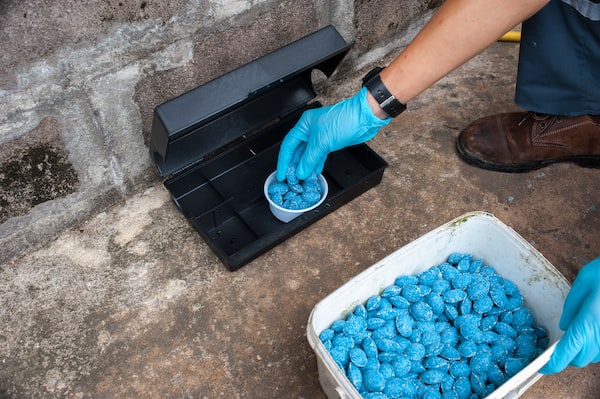
How quickly do rodent baits take to work?
How quickly rodent baits work depends on three main factors:
- How long it takes before the rodent finds and eats the bait?
- How much bait is eaten?
- What type of rodenticide is in the bait?
Placing the bait in the most likely foraging sites will help the rodents find the bait. However, rats are actually neophobic – they are frightened of new things – so they will often ignore a bait for a few days, even if they find it immediately.
Rodents, and especially mice, don’t need to eat much bait to get a lethal dose. However, the more bait the rodent eats (relative to its body weight) the faster the bait works.
The type of rodenticide in the bait also impacts the speed of action, but most contain ‘single feed’ rodenticides. These are potent enough for the rodent to ingest a lethal dose in a single feed. However, it can still take 4-7 days for the rodent to die.
How quickly it takes to get on top of an infestation depends on the number of rodents present and the nature of the problem. For most low-level residential problems, control is achieved in a week or so. For heavy infestations, several re-applications will be required over a number of weeks to eliminate the problem.
Successful Placement of Rodent Baits
Placing rodent baits in the best position to get control and placing enough bait for the size of the infestation are important to gain control as quickly as possible. The bait placement and quantity used will also vary depending on the species of rat or mice present, so it’s important to identify the type of rodent present and understand its behaviour.
This is one of the main reason DIY rodent treatments fail. Simply throwing rodent bait into the roof void literally is a hit and miss strategy and it also creates some safety concerns (see below).
Rat baits v Mouse Baits
Although most people all rodent baits, rat baits, the reality is that the majority of baits are suitable for both rats and mice.
How safe are rodent baits?
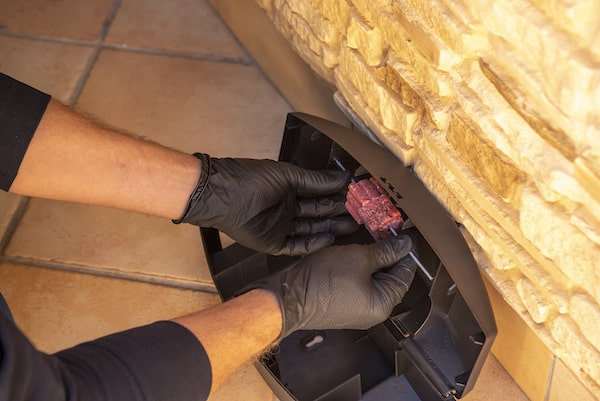
Rats and mice are mammals, like dogs and humans, and so rodent baits can have a serious impact on children and pets if accidentally ingested.
Fortunately, the amount of rodenticide in rodent baits is at a very low concentration, so dogs and children would need to eat a lot of rodent bait to cause a problem. In addition, most commercial rodent baits contain a bittering agent that make them very unpalatable to humans.
However, if a child or dog is suspected of eating any rodent bait they should be taken to the doctor or vet immediately for appropriate assessment and treatment.
Responsible pest managers will also place rodent bait out of the reach of children and pets and use lockable bait stations to secure the bait.
It is also important to consider the impact of rodent baits on native animals. Possums will readily eat rodent bait, further illustrating the need for lockable bait stations. There is also the issue of secondary poisoning where carnivores such as birds of prey will eat dead rodents containing rodent bait. Picking up dead rodents as soon as they appear will reduce this risk.
Mouse traps and Rat Traps
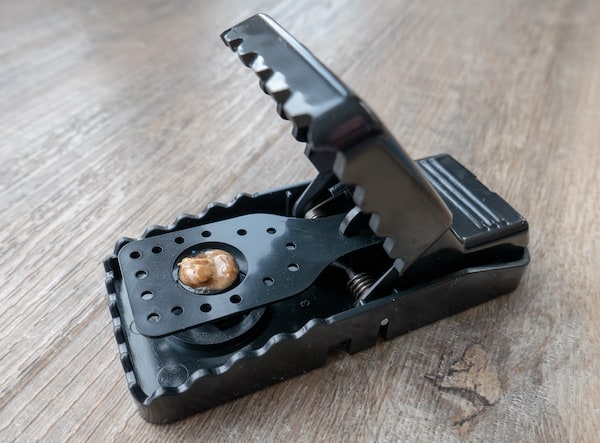
In situations where there are increased safety concerns in using rodent baits, mouse traps and rat traps can be used to gain control, although it may be more time consuming.
Rodent baits are one of the key tools for pest managers to control rat and mice problems. However, using rat baits to get control of rodent problems takes knowledge and skill, not only to ensure complete control is achieved as quickly as possible, but to make sure the rodent treatment is carried out safely. If you’re experiencing a rodent problem, contact the experts at Go Pest, Pest and Weed.

